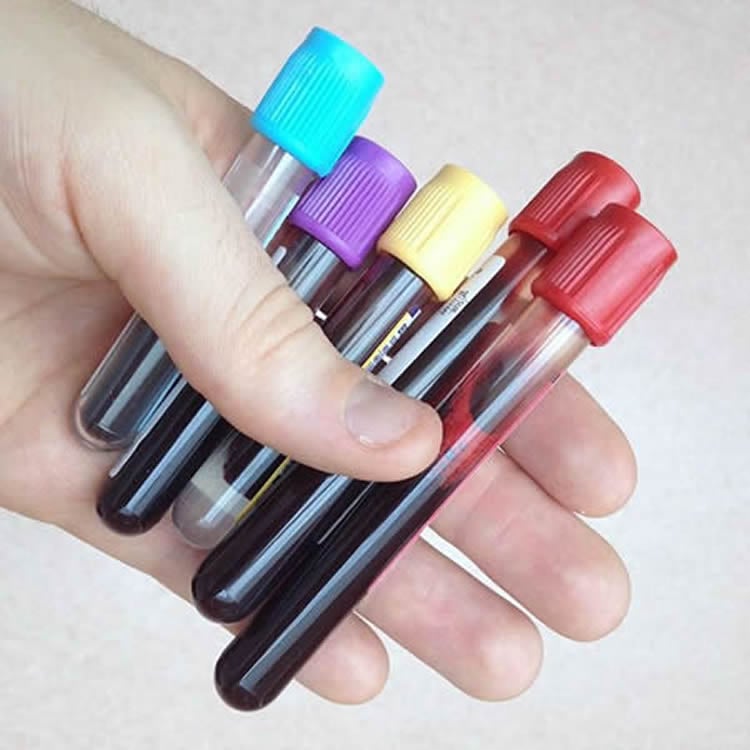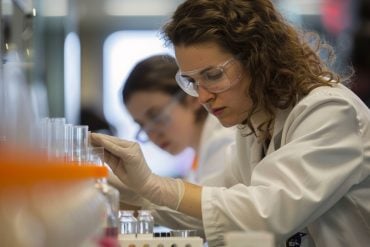Men who have high levels of urate, also known as uric acid, in their blood may be less likely to develop Parkinson’s disease, according to a study published in the Jan. 13, 2016, online issue of Neurology.
Urate is formed when other chemicals, called purines, are broken down in the body. Purines are found in food, and some purines are the building blocks of DNA. Studies have suggested that urate may play a protective role with brain cells.
“These results suggest that urate could protect against Parkinson’s or slow the progression of the disease in its very early stages before symptoms are seen,” said study author Xiang Gao, MD, PhD, of Pennsylvania State University in University Park and a member of the American Academy of Neurology. “The findings support more research on whether raising the level of urate in people with early Parkinson’s may slow the disease down.”
Gao said the idea is exciting, as urate levels can be raised easily and inexpensively, but it must also be done cautiously, as excessively high levels of urate can cause kidney stones and gout.
The study looked at 90,214 participants in three large, ongoing studies. Blood tests measured the urate level of participants. A total of 388 people who developed Parkinson’s disease after the start of the studies were compared to 1,267 people who did not have the disease. The researchers also combined their results with the results from three previous studies on the topic for a meta-analysis.
The men with the lowest level of urate had levels of less than 4.9 milligrams per deciliter. Those with the highest levels had 6.3 to 9.0 mg/dL. Normal levels can range from 3.5 to 7.2 mg/dL. The men who had the highest levels of urate were nearly 40 percent less likely to develop Parkinson’s disease than those with the lowest levels. Among the men with Parkinson’s disease, 45 men had the highest level of urate and 58 men had the lowest level of urate. Among the healthy men, 111 were in the group with the highest level of urate; 107 were in the group with the lowest level. The researchers adjusted for other factors that could affect Parkinson’s disease risk, such as age, smoking and caffeine use. There was no relationship between the level of urate in women and whether they developed Parkinson’s disease.

Gao noted that the study does not prove that high levels of urate protect against Parkinson’s disease; it only shows an association consistent with a lower risk effect. He also notes more studies are needed to understand the sex differences in the relationship between urate and Parkinson’s disease.
Funding: The study was supported by the National Institutes of Health.
Source: Rachel Seroka – AAN
Image Source: The image is in the public domain
Original Research: Abstract for “Prospective study of plasma urate and risk of Parkinson disease in men and women” by Xiang Gao, Éilis J. O’Reilly, Michael A. Schwarzschild, and Alberto Ascherio in Neurology. Published online January 16 2016 doi:10.1212/WNL.0000000000002351 1526-632X
Abstract
Prospective study of plasma urate and risk of Parkinson disease in men and women
Objective: To examine whether higher plasma urate concentrations are associated with a lower risk of developing Parkinson disease (PD) and whether there is a sex difference in the potential urate–PD relationship.
Methods: We conducted a nested case-control study based on 90,214 participants of 3 ongoing US cohorts. We identified 388 new PD cases (202 men and 186 women) since blood collection, which were then matched to 1,267 controls. PD cases were confirmed by medical record review. Conditional logistic regression estimated relative risks (RRs) and 95% confidence intervals (95% CIs), after adjustment for age, smoking, caffeine intake, plasma concentrations of cholesterol and ferritin, and other covariates. We also conducted a meta-analysis to combine our study with 3 previously published prospective studies on urate and PD risk.
Results: In the present nested case-control study, the multivariate-adjusted RRs of PD comparing extreme quartiles of urate were 0.63 (95% CI 0.35, 1.10; ptrend = 0.049) in men and 1.04 (95% CI 0.61, 1.78; ptrend = 0.44) in women (pheterogeneity = 0.001). In the meta-analysis, the pooled RRs comparing 2 extreme quartiles of urate were 0.63 (95% CI 0.42, 0.95) in men and 0.89 (95% CI 0.57, 1.40) in women.
Conclusion: We observed that men, but not women, with higher urate concentrations had a lower future risk of developing PD, suggesting that urate could be protective against PD risk or could slow disease progression during the preclinical stage of disease.
“Prospective study of plasma urate and risk of Parkinson disease in men and women” by Xiang Gao, Éilis J. O’Reilly, Michael A. Schwarzschild, and Alberto Ascherio in Neurology. Published online January 16 2016 doi:10.1212/WNL.0000000000002351 1526-632X






